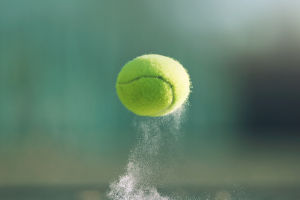Tennis, a sport that combines elegance and power, boasts a long history and embodies endless charm and possibilities.
From a form of court entertainment in ancient times to a global sporting spectacle today, tennis continually reflects the art and intellect of athletics.
Whether played on grass, hard, or clay courts, every shot and every point in tennis tells a story of speed, skill, and strategic competition.
1. A Long History
The history of tennis can be traced back to 12th-century France, where a game known as "jeu de paume" involved players hitting a soft ball with their palms. Over time, this evolved into the use of rackets. By the late 19th century, the modern form of tennis had taken shape in England.
As time passed, tennis rapidly expanded worldwide, becoming an Olympic sport and giving rise to the four Grand Slam tournaments—Wimbledon, the US Open, the French Open, and the Australian Open.
2. Diversity and Skill
Tennis, which balances technique and physical endurance, places comprehensive demands on its players. Whether it’s the power of a serve, the angle of a return, or the rhythm of a rally, tennis athletes require intense focus and exceptional coordination.
Serving is considered one of the most advantageous weapons in a match, with a powerful and precise serve leaving opponents with little to respond. Meanwhile, returning serves requires quick reflexes and sharp judgment.
Tennis strategies are also highly diverse. Players must not only develop game plans based on their opponent’s strengths but also adjust their play according to the type of court. For example, on grass courts, where the ball moves faster, aggressive play is often more effective. Conversely, clay courts slow the ball down, making long rallies more common.
3. Joyful Moments
Despite the intensity of the competition, the tennis court is often filled with unexpected moments of joy. Many small incidents during matches not only bring laughter to the audience but also become part of the event itself.
For instance, renowned player Rafael Nadal paused to tie his shoelaces during a French Open match after noticing they had come undone while serving. The crowd responded with laughter and applause. Such moments reveal the athletes' humor and spontaneity under pressure.
4. Profound Influence
Tennis is not just a global sport but also a cultural symbol, particularly in fashion and etiquette. Tennis players’ outfits are often simple yet elegant, embodying the noble spirit of the game.
Wimbledon’s tradition of all-white attire is a perfect example—white represents purity and elegance, aligning with the tournament’s prestigious atmosphere. Players like the Williams sisters and Roger Federer, through their style choices on the court, often set trends in sports fashion.
Looking to the future, tennis will continue to shape the development of sports culture and draw in new athletes and fans. Whether you are a professional player or a beginner, tennis offers its unique way of challenging and rewarding you. Every swing of the racket is a tribute to strength and grace; every point earned is a reflection of effort and perseverance. The world of tennis is forever filled with new stories waiting for us to explore and discover.


